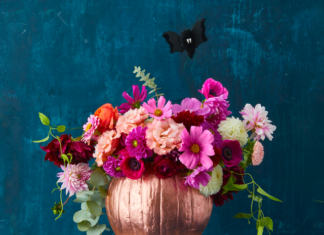
Marigolds are fabulous flowers that are easy to grow, relatively problem-free, and quite attractive. There are several varieties and they can grow in just about any climate with proper care. There are a few traits that turn some gardeners off of them; however, many gardeners find them to be an eye-catching and care-free addition to the garden. Plus, there are many uses for marigolds.
Varieties
There are too many varieties of marigolds to list them. They are available in many different mixes and types that produce colorful flowers in shades of gold, yellow, orange, burgundy, scarlet, and off-white. Some have daisy-looking petals while others have blooms that look a lot like a carnation. Some types of the flowers are even two-tone with stunning shades of gold and burgundy.
With the diversity of marigolds, you can plant a dazzling garden just with different types of them. They are an annual, which means that they have to be replanted every year. If you plant them in the spring, they will usually bloom during the spring and into the fall.
Planting and care
Marigolds are most often planted outside; however, they can be started indoors if frosty days haven’t passed. If planting outside, be sure that you have received your last frost. If you haven’t, start them inside. It is best to plant at the beginning of spring.
They usually require spacing of about six inches between plants, but for some varieties it is recommended to plant them eighteen inches apart. When planting your marigolds, be sure to follow the recommended distance for spacing them.
Marigolds are not too finicky, but they grow the best when you can provide them with full sun. Well-drained soil is also preferable. They can be planted in a flower bed, containers or as a lining to any garden.
Marigolds are easy to care for. They need water when the soil is dry. Pinching off wilted flowers will help them to bloom again. They are problem-free in that they are not susceptible to disease and do not attract insects; however, they need to sprayed with water frequently to prevent spider mites. Grasshoppers and slugs are enemies of the marigold, so you may to have to treat for that if it is a problem in your area. If you don’t have a problem with grasshoppers and slugs, maintaining a garden of marigolds is trouble-free.
Uses for marigolds
Marigolds have several uses. It is an old wives’ tale that marigolds can used to repel insects that might damage vegetable gardens. Many people believe that, but some researchers say that they don’t have the potential to be insect repellents even though their pungent odor prevents most insects from being attracted to them. Other researchers say they are as effective as chemical treatment for many gardens, and much safer.
Marigolds are used for decoration. Of course they are used in flower gardens, but many types are easily dried. They are often used in crafts. They make wonderful garlands and colorful wreaths. In some cultures, they even use them to make dye.
In the art of culinary, marigolds are invaluable. Many are edible so they can be used to garnish dishes, adding a touch of class to any recipe. Their flavor ranges from tangy to peppery so they can be dried and ground for spices, or chopped up fresh. All marigolds may not be edible, so be sure to check on an individual variety before you assume that they are safe for food.
Marigolds are known for their herbal traits. In fact, many are used in medicinal remedies and some clinical treatments. They are also used in cosmetics including body lotion and creams. Because of the strong odor, the extract from marigolds is also commonly used in perfumes and candles.
Marigolds are quite amazing which makes them a top choice for many gardeners. When compared to other flowers, they are simple to grow, easy to take care of and pretty unproblematic. They will grow in a variety of environments, as long they aren’t subjected to frost. They can be grown in beds, gardens or pots. Their negative effects are few and there are solutions for most of the drawbacks that prevents them from being challenging flowers to grow. There is such a great variety of marigolds that they are sure to complement any garden. They are beautiful, to say the least, and they can be quite stunning. There are so many uses for marigolds that make them popular flowers all around the world.





































